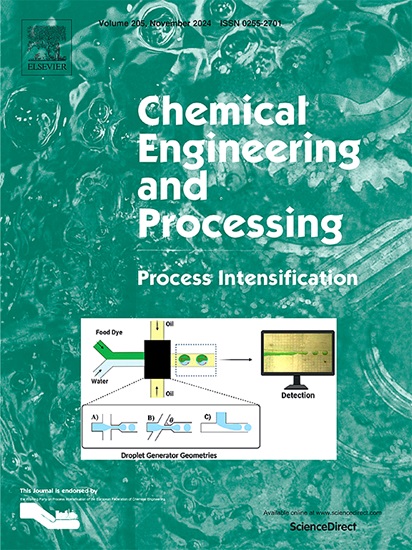Blue LED photolytic method for the synthesis of 1,4-dihydropyridine derivatives from benzo [b]thiophene-2-carbaldehyde
IF 3.8
3区 工程技术
Q3 ENERGY & FUELS
Chemical Engineering and Processing - Process Intensification
Pub Date : 2025-02-05
DOI:10.1016/j.cep.2025.110205
引用次数: 0
Abstract
This study presents a highly efficient and operationally simple protocol for synthesizing 1,4-dihydropyridine derivatives. The protocol uses an inexpensive and readily available photocatalyst Mn2(CO)10, which plays a crucial role in the single-pot, four-component reaction involving benzo [b]thiophene-2-carbaldehyde, malononitrile, dialkyl acetylene dicarboxylate, and anilines in a blue LED (400–500 nm) photocatalytic technique. The reaction conditions include the use of blue LEDs, a lower catalyst load, and green solvents like dimethyl sulfoxide (DMSO) and water in a 1:1 ratio. The multicomponent photocatalytic approach negates the use of expensive catalysts and the necessity of multi-step routes, in addition to providing better atom economy and an easy work-up process, and it is environmentally benign. The derivatives were effectively synthesized in higher yields and characterized using 1H NMR, 13C NMR, and ESI-MS. The obtained 1,4 dihydropyridines also have tremendous capability for biological and pharmacological activities, opening exciting possibilities for future research and applications.

求助全文
约1分钟内获得全文
求助全文
来源期刊
CiteScore
7.80
自引率
9.30%
发文量
408
审稿时长
49 days
期刊介绍:
Chemical Engineering and Processing: Process Intensification is intended for practicing researchers in industry and academia, working in the field of Process Engineering and related to the subject of Process Intensification.Articles published in the Journal demonstrate how novel discoveries, developments and theories in the field of Process Engineering and in particular Process Intensification may be used for analysis and design of innovative equipment and processing methods with substantially improved sustainability, efficiency and environmental performance.

 求助内容:
求助内容: 应助结果提醒方式:
应助结果提醒方式:


